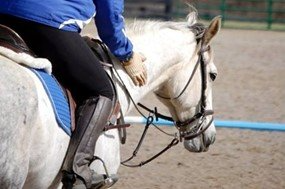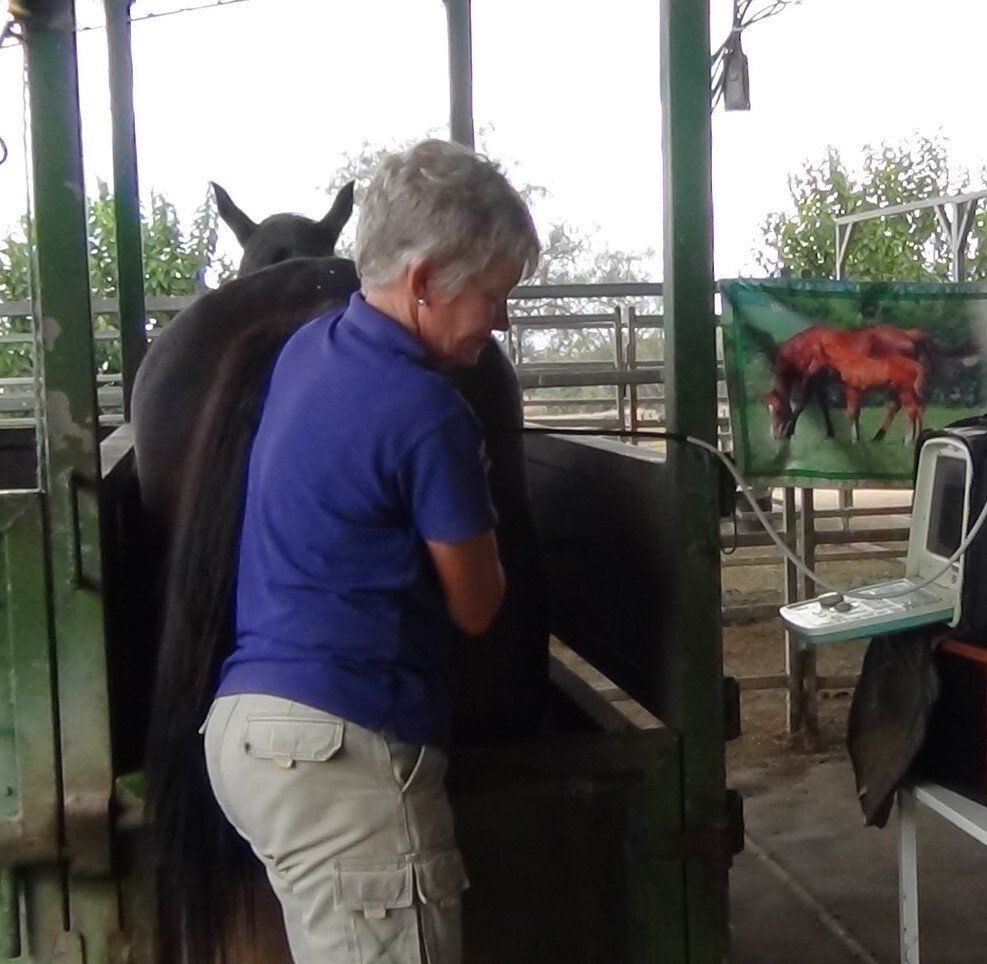Horse talk Articles
STUD PROTOCOL
VACCINATIONS - MARES
Unless the vaccination history is known it should be assumed that the mare is unvaccinated. The majority of studs require that all mares are vaccinated against Strangles, Tetanus, Equines Herpes Virus (EHVI) and Salmonella.
A previously unvaccinated mare will require:
- EHVI - two doses one (1) month apart with a booster six (6) months later. I think you have already given at least one dose in April - so if previously unvaccinated, give a repeat dose this month (if it is two (2) months between doses, there is no problem) and a booster in November. If they are previously vaccinated, give next dose in October of if early mares are to foal in September, you could bring it forward to the end of August for all mares every year.
- Salmonella - two doses one (1) month apart if previously unvaccinated. The first dose should be given in June with the second dose in July i.e.: before EHVI. If the mare has been previously vaccinated, a single does approximately one (1) month before foaling will suffice. This should be repeated every year one (1) month before foaling.
- Strangles and Tetanus - if previously unvaccinated give one (1) dose of strangles and tetanus combined, followed by a strangles only two (2) weeks later and a combined dose again two (2) weeks later. If previously vaccinated, a single dose of the combined vaccine will suffice, again approximately one (1) month before foaling. This can be given at the same time as salmonella on the opposite side of the neck.
It is important to also maintain the vaccination status of dry or maiden mares ie: include them with wet mares for EHVI boosters and give them an annual booster of Salmonella, Strangles and Tetanus say, for convenience, on the first of August.
VACCINATION - FOALS
I will assume all mares have had boosters before foaling.
- Salmonella vaccination should be started at three (3) months of age with two doses one month apart.
- Strangles and Tetanus should be commenced at three (3) months - three doses as for mares.
I suggest starting all three vaccinations when youngest foal is three (3) months old. Again all three vaccinations can be given together.
EHVI does not have to be given until five (5) months but I would suggest giving all foals first dose in March, second dose in April and six month dose in November/December approximately two weeks before coming into boxes for yearling sale preparation. I would not booster Strangles, Tetanus or Salmonella prior to sales but advise new owners to booster in February.
WORMING
Worm all horses every eight (8) weeks regardless of pregnancy, including foals from six (6) weeks of age. Aim for last dose approximately two (2) weeks before foaling date. Ensure all horses are done for Bots once a year, preferable in May or June after the frosts with a Boticide - this can be Equimec, Equest or any of the 'plus' pastes which contain Neguvon. Neguvon 'plus' paste should only be used once each year. If Bot eggs are still visible on mares at time of this worming, scrape off or swab with warm water or kerosene. This will hatch them out although the empty shells may remain visible.
Any mares returning from Southern Studs should be done with Equest on their first treatment after returning home to ensure they have no tapeworms.
TEETH
Should be rasped or at least checked once yearly from two (2) years of age. Two (2) year olds should have Wolf teeth removed when first rasped. For convenience and to avoid rasping in late pregnancy, I suggest combining teeth with your Boticide drench in May/June.
FOALINGS
Check all mares for caslick operation at least three (3) weeks before due date and open if necessary. Mares with very bad vulval conformation may be left closer to foaling if monitored.
Check colostrum with colostrometer (available for approximately $350.00) in the two to three (2-3) days before foaling to ensure mare has adequate colostrum.
Try and establish a colostrum bank as early as possible in the foaling season. At least one (1) litre of colostrum can be collected from a high producing mare in the first twelve (12) hours without affection her foals supply. Always measure colostrum levels in frozen colostrum before freezing and freeze in 500ml aliquots in one (1) litre plastic bottles. Label each bottle with name of dam, date of collection and colostrum levels. Always thaw slowly in hot water, never in the microwave.
Monitor all foalings closely. If nothing showing after ten (10) minutes of getting down, have a feel and ensure head and legs are coming and if not, correct and/or call me. Once head and legs are showing, foal should be out in twenty (20) minutes (more commonly ten (10) minutes). If you have any doubts, call me immediately; you can always send me back if she delivers before I get there.
Afterbirth (placenta) should be passed within approximately thirty (30) minutes but can be left six (6) to eight (8) hours. If not passed within eight (8) hours, call me. All placentas should be spread out and checked when passed to check for missing pieces/tears etc.
FOAL CHECK
Notify me of any newborn foals so we can check the mare and foal within the first twenty-four (24) hours. We will check for passage of meconium, eyelids; H.I.A and leg deformities and do an IgG test to ensure adequate absorption on colostrum. Foals, which are still low in IgG, may require a plasma transfusion.
We may also choose to treat the mare at this time and repair her caslick.
BREEDING
Examine any mare, which you have any doubts about being in foal, in July so that if empty they can go under lights.
Lights or no lights, all barren, slipped or maiden mares should be examined mid August so that they are on track for early September services.
All mares should be swabbed on first examination (a swab certificate will be issued to go with them to the Southern Studs).
Mares foaling at Highhaven before 25 August should be examined at approximately day ten (10). If they have still not ovulated and are clean, they may be suitable for foal heat cover. If ovulated, they can be treated and be given prostaglandin five (5) days later. They should then be ready for cover at approximately day twenty (20) after foaling.
Mares foaling at Highhaven in October to December must be covered on foal heat and should be examined on day five (5) and seven (7).
All covered mares should be scanned twelve (12) to fourteen (14) days after cover. If in foal, they should be re-examined at approximately days twenty-five (25), thirty-five (35) and forty-five (45). Mares returning from Southern Studs after early tests should be re-examined on the same schedule.
All mares tested in foal should be re-examined in January or February to ensure they have retained their pregnancies.
Other Articles

Phone
Postal Address
142 Jimna Springs Road
Cambooya Qld 4358
Location
142 Jimna Springs Road
Southbrook Qld 4363
Follow Us
All Rights Reserved | Equivet Breeding Centre


